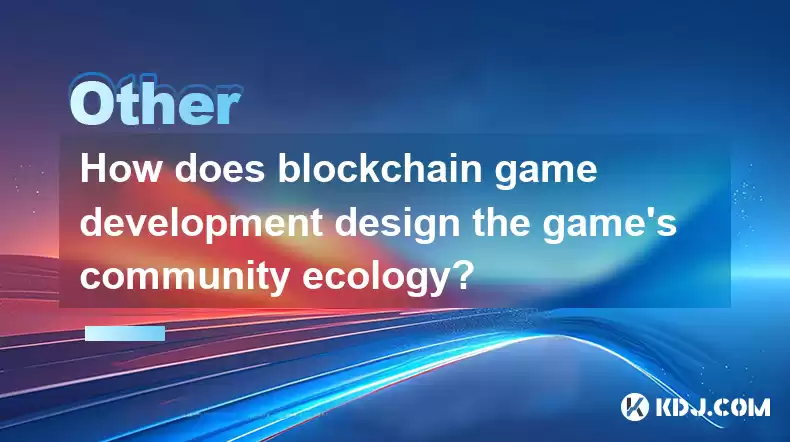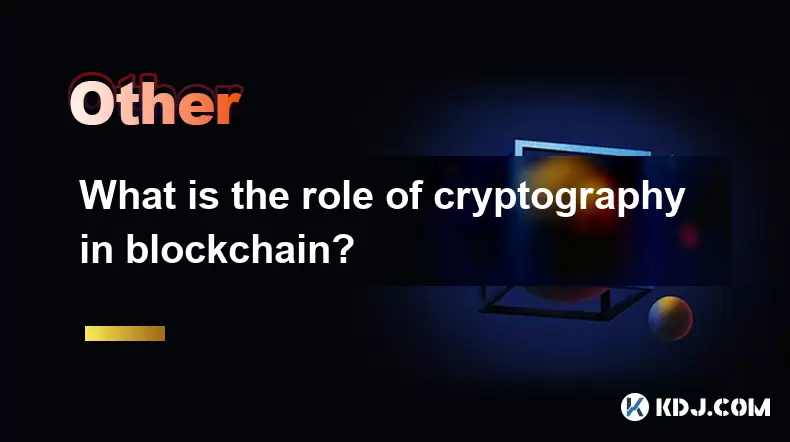-
 Bitcoin
Bitcoin $113800
0.32% -
 Ethereum
Ethereum $3477
-0.14% -
 XRP
XRP $2.873
-2.20% -
 Tether USDt
Tether USDt $0.9999
0.02% -
 BNB
BNB $749.3
-0.40% -
 Solana
Solana $161.7
-0.55% -
 USDC
USDC $0.9998
0.00% -
 TRON
TRON $0.3268
0.28% -
 Dogecoin
Dogecoin $0.1976
-0.03% -
 Cardano
Cardano $0.7250
2.27% -
 Hyperliquid
Hyperliquid $39.18
2.73% -
 Sui
Sui $3.457
1.70% -
 Stellar
Stellar $0.3832
1.16% -
 Chainlink
Chainlink $16.11
1.49% -
 Bitcoin Cash
Bitcoin Cash $539.7
1.25% -
 Hedera
Hedera $0.2410
2.21% -
 Ethena USDe
Ethena USDe $1.001
0.04% -
 Avalanche
Avalanche $21.35
0.21% -
 Toncoin
Toncoin $3.716
3.86% -
 Litecoin
Litecoin $109.3
2.88% -
 UNUS SED LEO
UNUS SED LEO $8.965
0.04% -
 Shiba Inu
Shiba Inu $0.00001214
1.02% -
 Polkadot
Polkadot $3.589
1.85% -
 Uniswap
Uniswap $9.083
1.24% -
 Monero
Monero $299.3
0.98% -
 Dai
Dai $1.000
0.02% -
 Bitget Token
Bitget Token $4.301
0.43% -
 Pepe
Pepe $0.00001045
1.32% -
 Cronos
Cronos $0.1314
0.51% -
 Aave
Aave $257.6
2.04%
How does blockchain game development design the game’s community ecology?
Blockchain game development integrates decentralized tech into gaming, focusing on a robust community ecology to foster engagement and ensure sustainability and growth.
Apr 15, 2025 at 12:56 pm

Blockchain game development has revolutionized the gaming industry by integrating decentralized technologies into interactive gaming experiences. One of the crucial aspects of this integration is designing a robust game's community ecology. The community ecology not only fosters engagement but also ensures the sustainability and growth of the game. This article delves into the various strategies and methodologies employed in designing a blockchain game's community ecology.
Understanding the Role of Community in Blockchain Games
Community is the lifeblood of any blockchain game. It drives the game's economy, influences its development, and ensures its longevity. In traditional gaming, community engagement might be limited to forums and social media. However, in blockchain games, the community plays a more integral role due to the decentralized nature of the technology.
In blockchain games, players often have ownership of in-game assets, which are represented as non-fungible tokens (NFTs). This ownership empowers players to influence the game's direction and economy. As such, designing the community ecology involves creating systems that encourage active participation, collaboration, and governance.
Building a Decentralized Governance System
A key component of a blockchain game's community ecology is the decentralized governance system. This system allows players to have a say in the game's development and decision-making processes. By implementing a governance token, players can vote on proposals that affect the game's future, such as new features, updates, or changes to the in-game economy.
- Create a governance token: Develop a token that players can earn through gameplay or purchase. This token grants voting rights within the game's ecosystem.
- Establish a proposal system: Allow players to submit proposals for changes or additions to the game. These proposals can be voted on by the community.
- Implement voting mechanisms: Use smart contracts to facilitate transparent and secure voting processes. Ensure that the voting system is user-friendly and accessible to all players.
By empowering the community with governance capabilities, developers can foster a sense of ownership and investment in the game's success.
Fostering Economic Incentives
Another critical aspect of designing a blockchain game's community ecology is fostering economic incentives. Players are more likely to engage actively if they see tangible benefits from their participation. This can be achieved through various mechanisms, such as earning rewards, trading in-game assets, and participating in the game's economy.
- Implement a reward system: Design a system where players can earn tokens or NFTs by completing tasks, achieving milestones, or contributing to the community.
- Enable asset trading: Create a marketplace where players can buy, sell, and trade their in-game assets. This not only adds value to the assets but also encourages players to engage more deeply with the game.
- Balance the economy: Ensure that the game's economy is balanced to prevent inflation or deflation. Regularly monitor and adjust the supply and demand of in-game assets.
By providing economic incentives, developers can encourage continuous engagement and create a vibrant and active community.
Promoting Collaboration and Social Interaction
Collaboration and social interaction are vital for building a strong community ecology in blockchain games. Players who feel connected to others are more likely to stay engaged and contribute to the game's growth. Developers can promote collaboration through various in-game features and community initiatives.
- Create multiplayer features: Design gameplay elements that require players to work together, such as cooperative missions, guilds, or team-based competitions.
- Host community events: Organize regular events, such as tournaments, treasure hunts, or community challenges, to bring players together and foster a sense of community.
- Develop social platforms: Integrate social features into the game, such as chat rooms, forums, or social media integration, to facilitate communication and interaction among players.
By promoting collaboration and social interaction, developers can build a cohesive and engaged community that drives the game's success.
Encouraging Content Creation and User-Generated Content
Content creation and user-generated content are powerful tools for enhancing a blockchain game's community ecology. By allowing players to create and share their own content, developers can tap into the creativity and passion of their community, leading to a more dynamic and engaging game environment.
- Provide content creation tools: Develop user-friendly tools that allow players to create their own levels, characters, or game assets. These tools should be accessible and easy to use.
- Reward content creators: Implement a system where players can earn rewards for creating and sharing high-quality content. This can be in the form of tokens, NFTs, or in-game currency.
- Curate user-generated content: Establish a system for reviewing and curating user-generated content to ensure it meets quality standards and aligns with the game's vision.
By encouraging content creation, developers can leverage the creativity of their community to enrich the game's ecosystem and keep players engaged.
Implementing Feedback and Iterative Development
Feedback and iterative development are essential for continuously improving a blockchain game's community ecology. By listening to the community and making regular updates based on their feedback, developers can ensure that the game remains relevant and engaging.
- Gather player feedback: Use surveys, polls, and forums to collect feedback from players on various aspects of the game, such as gameplay, economy, and community features.
- Analyze feedback data: Regularly analyze the feedback data to identify common themes and areas for improvement. Use this data to inform development priorities.
- Implement iterative updates: Release regular updates and patches based on community feedback. Communicate these updates transparently to the community to show that their input is valued.
By implementing a feedback loop and engaging in iterative development, developers can create a game that evolves with its community, ensuring long-term engagement and satisfaction.
Frequently Asked Questions
Q: How can blockchain games ensure the security of their community ecology?
A: Blockchain games can ensure the security of their community ecology by implementing robust smart contract audits, using secure wallet integrations, and maintaining transparent communication about security measures. Additionally, educating the community about best practices for securing their assets can help mitigate risks.
Q: What role do influencers and ambassadors play in a blockchain game's community ecology?
A: Influencers and ambassadors play a crucial role in promoting the game, engaging with the community, and providing valuable feedback. They can help attract new players, foster a positive community culture, and act as liaisons between the developers and the community.
Q: How can blockchain games balance the interests of different player segments within the community ecology?
A: Balancing the interests of different player segments involves creating diverse gameplay options, implementing fair economic systems, and ensuring that all players have a voice in the governance process. Developers can also use data analytics to understand the needs and preferences of different player segments and tailor their strategies accordingly.
Q: What are some common challenges in designing a blockchain game's community ecology, and how can they be addressed?
A: Common challenges include maintaining player engagement, managing community expectations, and dealing with potential conflicts. These can be addressed by fostering open communication, implementing fair and transparent governance systems, and continuously iterating on the game based on community feedback.
Disclaimer:info@kdj.com
The information provided is not trading advice. kdj.com does not assume any responsibility for any investments made based on the information provided in this article. Cryptocurrencies are highly volatile and it is highly recommended that you invest with caution after thorough research!
If you believe that the content used on this website infringes your copyright, please contact us immediately (info@kdj.com) and we will delete it promptly.
- Solana's Next Chapter: SOL Prediction and the SOLF Token Buzz
- 2025-08-03 18:30:16
- Token Chart Buzz: Analysts Eye Potential Price Increase with Mutuum Finance (MUTM)
- 2025-08-03 18:30:16
- Dogecoin, Utility Tokens, and Whales: A New Era for Crypto?
- 2025-08-03 19:10:16
- Small Cap Crypto Gem Alert: Ruvi AI's 100x Potential Shakes Up Solana, Ethereum, and XRP
- 2025-08-03 19:10:16
- SOLF Token vs. BONK: Predicting a $300 Solana in 2025?
- 2025-08-03 16:30:16
- Sei, Injective, and Bitcoin Dominance: Navigating the Crypto Landscape
- 2025-08-03 16:50:15
Related knowledge

What is the difference between on-chain and off-chain transactions?
Aug 02,2025 at 04:22pm
Understanding On-Chain TransactionsOn-chain transactions refer to digital asset transfers that are recorded directly on a blockchain ledger. These tra...

What is a node's role in a blockchain network?
Aug 03,2025 at 03:16pm
Understanding the Function of a Node in a Blockchain NetworkA node is a fundamental component of any blockchain network, acting as a participant that ...

What is the double-spending problem and how does blockchain prevent it?
Aug 02,2025 at 01:07pm
Understanding the Double-Spending ProblemThe double-spending problem is a fundamental challenge in digital currency systems where the same digital tok...

What is the difference between a blockchain and a database?
Aug 01,2025 at 09:36pm
Understanding the Core Structure of a BlockchainA blockchain is a decentralized digital ledger that records data in a series of immutable blocks linke...

How does blockchain handle scalability?
Aug 02,2025 at 02:58pm
Understanding Blockchain Scalability ChallengesBlockchain scalability refers to a network's ability to handle an increasing volume of transactions wit...

What is the role of cryptography in blockchain?
Aug 03,2025 at 03:42pm
Understanding the Foundation of Blockchain SecurityCryptography is the cornerstone of blockchain technology, providing the essential tools to ensure d...

What is the difference between on-chain and off-chain transactions?
Aug 02,2025 at 04:22pm
Understanding On-Chain TransactionsOn-chain transactions refer to digital asset transfers that are recorded directly on a blockchain ledger. These tra...

What is a node's role in a blockchain network?
Aug 03,2025 at 03:16pm
Understanding the Function of a Node in a Blockchain NetworkA node is a fundamental component of any blockchain network, acting as a participant that ...

What is the double-spending problem and how does blockchain prevent it?
Aug 02,2025 at 01:07pm
Understanding the Double-Spending ProblemThe double-spending problem is a fundamental challenge in digital currency systems where the same digital tok...

What is the difference between a blockchain and a database?
Aug 01,2025 at 09:36pm
Understanding the Core Structure of a BlockchainA blockchain is a decentralized digital ledger that records data in a series of immutable blocks linke...

How does blockchain handle scalability?
Aug 02,2025 at 02:58pm
Understanding Blockchain Scalability ChallengesBlockchain scalability refers to a network's ability to handle an increasing volume of transactions wit...

What is the role of cryptography in blockchain?
Aug 03,2025 at 03:42pm
Understanding the Foundation of Blockchain SecurityCryptography is the cornerstone of blockchain technology, providing the essential tools to ensure d...
See all articles

























































































